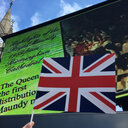Leaf litter species identity influences biochemical composition of ectomycorrhizal fungi.
Sleutelwoorden
Abstract
In forest ecosystems, ectomycorrhizal (ECM) fungi are important for plant growth and soil biogeochemical processes. The biochemical composition of ECM mycelium is an important fungal effect trait with consequences for its decomposition rate, and consequently on soil carbon pools and plant nutrition. Although the link between ECM fungi and leaf litter-released nutrients is well known, the response of ECM fungal biochemical composition to different leaf litter species remains poorly understood. To determine how leaf litter quality influences ECM fungi's biochemical profiles, we planted young beech trees in an oak forest and replaced the natural leaf litter with that of European beech (Fagus sylvatica), ash (Fraxinus excelsior), maple (Acer pseudoplatanus), or lime (Tilia cordata). We assessed the biochemical profiles of ECM root tips colonized by common fungal taxa in temperate forests (i.e., Cenococcum geophilum, Inocybe sp., and Lactarius subdulcis), using attenuated total reflectance Fourier transform infrared spectroscopy (ATR-FTIR). ECM fungal biochemical composition changed with leaf litter species. Changes were apparent in the infrared absorption bands assigned to functional groups of lipids, amides, and carbohydrates. C. geophilum and L. subdulcis exhibited large spectral differences corresponding to the initial pattern of leaf litter chemical composition between samples collected in the beech and ash leaf litter treatments. In contrast, Inocybe sp. was influenced by lime, but with no differences between samples from ash or beech leaf litter treatments. Although the spectral bands affected by leaf litter type differed among ECM fungi, they were mainly related to amides, indicating a dynamic response of the fungal proteome to soil nutritional changes. Overall, the results indicate that the biochemical response of ECM fungi to leaf litter species varies among ECM fungal species and suggests that the biochemical composition of ECM mycelium is a fungal response trait, sensitive to environmental changes such as shifts in leaf litter species.



